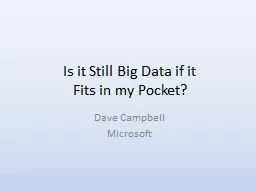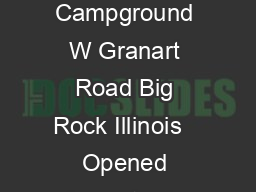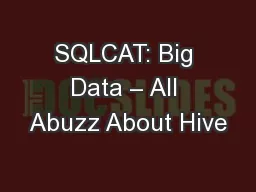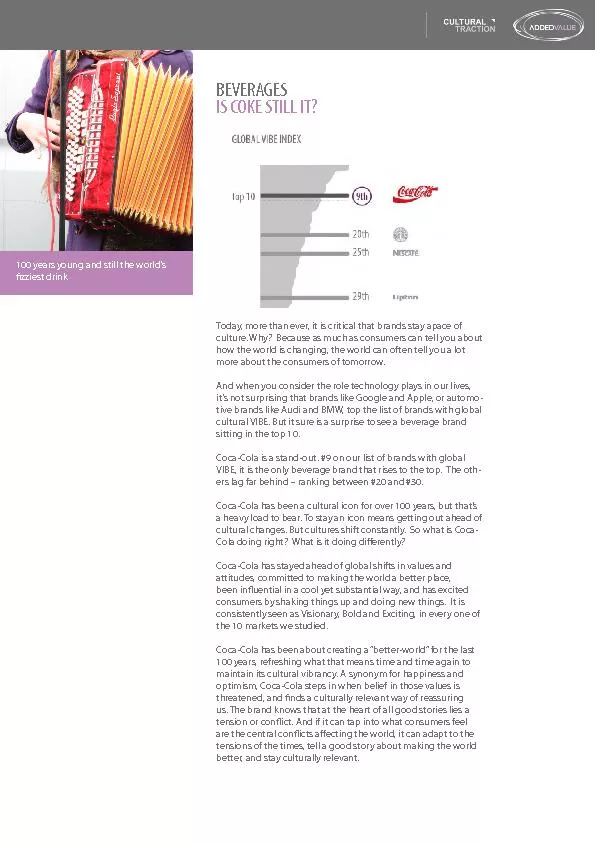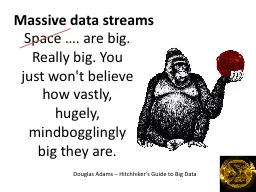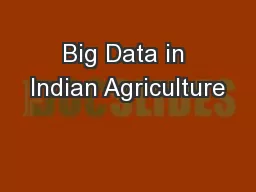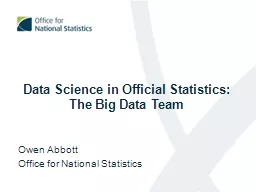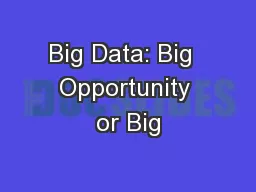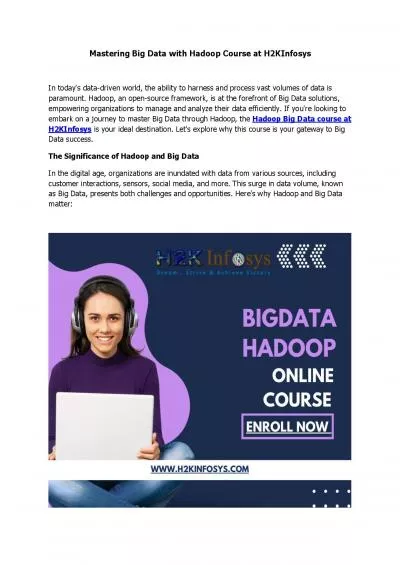PPT-Is it Still Big Data if it
Author : danika-pritchard | Published Date : 2015-11-28
Fits in my Pocket Dave Campbell Microsoft The Journey Objective Try to separate hype from reality Identify unique new value Is mapreduce a giant steps backwards
Presentation Embed Code
Download Presentation
Download Presentation The PPT/PDF document "Is it Still Big Data if it" is the property of its rightful owner. Permission is granted to download and print the materials on this website for personal, non-commercial use only, and to display it on your personal computer provided you do not modify the materials and that you retain all copyright notices contained in the materials. By downloading content from our website, you accept the terms of this agreement.
Is it Still Big Data if it: Transcript
Download Rules Of Document
"Is it Still Big Data if it"The content belongs to its owner. You may download and print it for personal use, without modification, and keep all copyright notices. By downloading, you agree to these terms.
Related Documents

